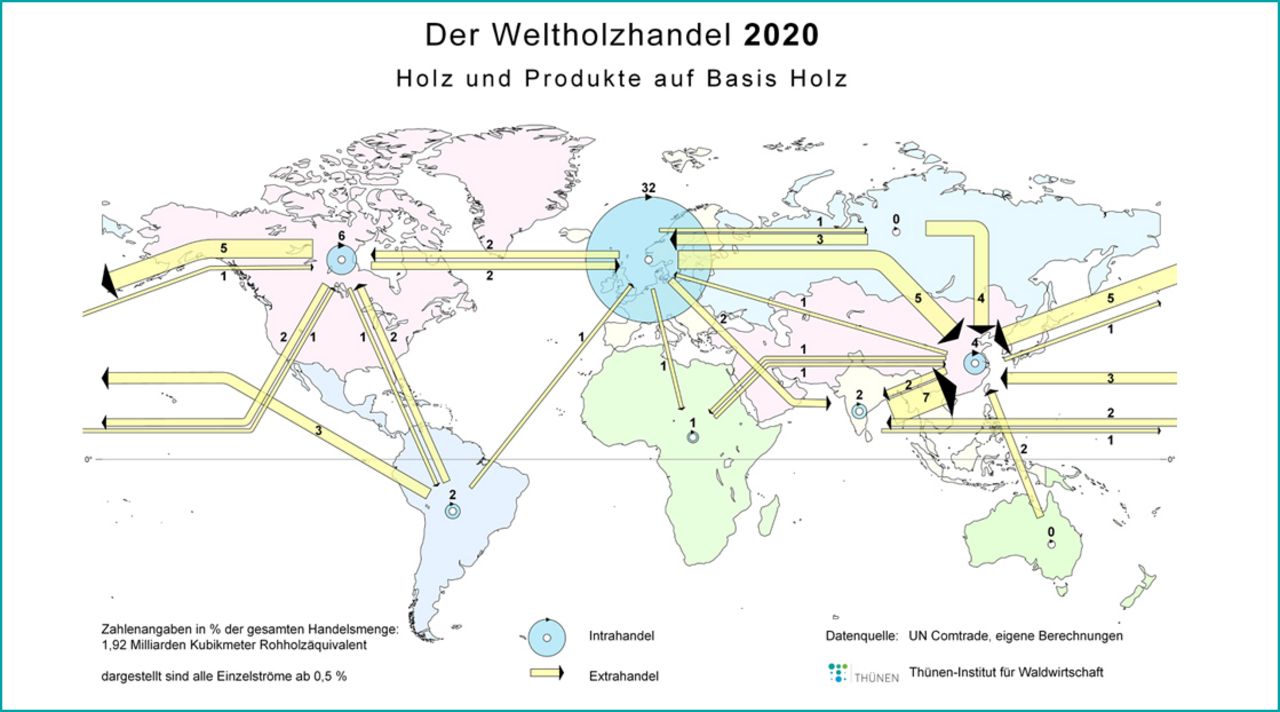Project
Analyses of forest products markets

Conducting analyses of forest products markets
Continuing globalisation and internationalisation in forest policy have pulled the wood trade flows into the interest of the public. For this reason we process on the international trade with wood and wood based products.
Background and Objective
International trade with products based on wood is developing dynamically since more than two decades. In order to identify the structures of the world trade flows and the changes over time we regularly analyse data (since 1993) on international trade with wood based products.
Approach
For our analyses we use databases such as UN Comtrade or Eurostat. We analyse trade flows in monetary values as well as in physical units. For a uniform presentation of the material flows we use the unit raw wood equivalent [m³(r)]. We take into account all relevant categories of wood based products: raw wood, wood residues, sawn wood, wood based panels, other semi finished wood products, finished wood products, pulp, paper and paperboard, finished paper products, regenerated cellulose. For illustration of the global trade flows the world is subdivided into eight regions.
Preliminary Results
Based on data from UN Comtrade, we have calculated an import-side global trade volume in wood and wood-based products of 1.92 billion m³(r) (cubic metres of roundwood equivalents) for the year 2020. Europe had the largest domestic trade among the eight timber trade regions with a share of 32% of total world trade. In trade among the regions, Asia (excluding South-East Asia and India) and here above all the People's Republic of China is the most important hub. Asia has developed into the most important global importer of wood raw materials and wood pulp in particular. For finished wood and paper products, it is still Europe.
Links and Downloads
www.thuenen.de/en/institutes/forestry/figures-facts/timber-trade/world-timber-trade
Thünen-Contact

List of Publications
- 0
Weimar H (2011) Der Holzfluss in der Bundesrepublik Deutschland 2009 : Methode und Ergebnis der Modellierung des Stoffflusses von Holz. Hamburg: vTI, 36 p, Arbeitsber Inst Ökon Forst Holzwirtsch vTI 2011/06
https://literatur.thuenen.de/digbib_extern/bitv/dn049777.pdf



![[Translate to English:] Logo des Bundesministerium für Ernährung und Landwirtschaft](/media/allgemein/logos/BMEL_Logo.svg)